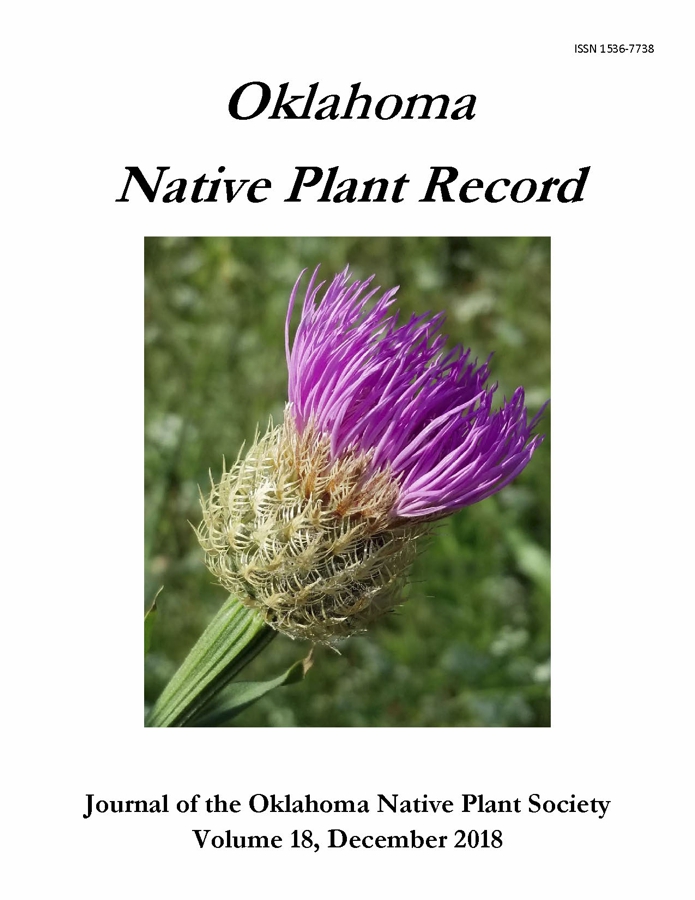Characteristics of a Bottomland Hardwood Forest at Arcadia Lake, Edmond, Oklahoma, with Special Emphasis on Green Ash (Fraxinus pennsylvanica Marshall)
Main Article Content
Abstract
We characterized the structure and tree species composition of bottomland hardwood forest at Arcadia Lake, Oklahoma County, Oklahoma. Additionally, we quantified the age structure of Fraxinus pennsylvanica Marshall (green ash) at the study site in order to establish a baseline dataset in the event that Agrilus planipennis (emerald ash borer) invades F. pennsylvanica stands in central Oklahoma. Three species, Salix nigra Marshall (black willow), F. pennsylvanica, and Populus deltoides W. Bartram ex Marshall (cottonwood) accounted for over 98% of importance values. These three species were also common in the understory. We found that 95% of F. pennsylvanica established following Arcadia Lake reaching pool conservation status in 1987. Arcadia Lake has experienced five sustained flooding events since 1995 that have likely played a role in regeneration at the study site. In particular, we showed that the 1995 event resulted in reduced radial growth in seedlings of F. pennsylvanica. Two biotic stressors appear to be influencing F. pennsylvanica overstory trees, Castor canadensis (American beaver) and Hylesinus spp. (ash bark beetle), which will likely enhance the establishment of A. planipennis at the study site. We recommend expanding the study of Fraxinus spp. forest stands in Oklahoma. Baseline data on Fraxinus species prior to an A. planipennis range expansion to central Oklahoma can enhance strategies for control and management of this invasive insect by identifying the traits of surviving ash following the invasion.
Article Details

This work is licensed under a Creative Commons Attribution-NonCommercial-ShareAlike 4.0 International License.
Articles (c) The Authors
Journal compilation (c) Oklahoma Native Plant Society
Except where otherwise noted, this work is licensed under a Creative Commons Attribution-NonCommercial-ShareAlike4.0 International License, (CC BY-NC-SA 4.0) https://creativecommons.org/licenses/by-nc-sa/4.0/, which permits unrestricted use, distribution, and reproduction in any medium, provided the original work is properly attributed, not used for commercial purposes, and, if transformed, the resulting work is redistributed under the same or similar license to this one.

